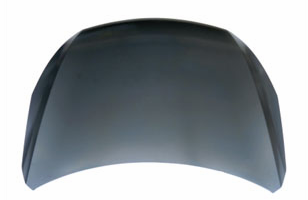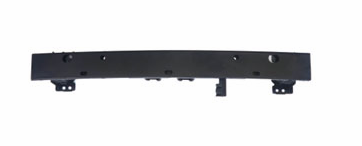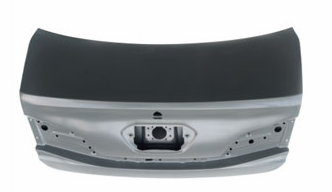Stamping process can be roughly divided into separation process and forming process (also divided into bending, deep drawing, forming) two categories. Separation process is to separate stamping parts and blanks along a certain contour line in the stamping process, and the quality of the separated section of stamping parts must meet certain requirements. Forming process is to make the stamping blanks plastic deformation without destroying and transform into the required finished product shape, and also to meet the requirements of the size of the common. Poor and other requirements.

According to the temperature of stamping, there are two ways: cold stamping and hot stamping. This depends on the strength, plasticity, thickness, degree of deformation and equipment capacity of the material, and the original heat treatment state and end-use conditions of the material should be taken into account.
Cold stamping metal processing at room temperature is generally suitable for blanks with thickness less than 4 mm. The utility model has the advantages of no heating, no oxide skin, good surface quality, convenient operation and low cost. The disadvantage is work hardening, which makes the metal lose the ability of further deformation. Cold stamping requires uniform blank thickness and small fluctuation range, smooth surface, no spot, no scratch and so on.

A stamping process in which metal is heated to a certain temperature range by hot stamping. The advantages are that the internal stress can be eliminated, the working hardening of automobile stamping parts can be avoided, the plasticity of materials can be increased, the deformation resistance can be reduced, and the power consumption of equipment can be reduced.
Die structure: Die is a tool for separating or deforming sheet metal. It consists of upper and lower modes. The handle of the upper die is fixed on the slider of the punch press, and moves up and down with the slider, while the lower die is fixed on the worktable of the punch press.
Punch and concave die are parts of the die that deform or separate the blank. Press plates are fixed on the upper and lower formwork respectively. The upper and lower formwork are respectively equipped with guide sleeve and guide pillar to guide the alignment of punch and die. The guide plate and positioning pin are used to control the direction and length of blank feeding respectively. The function of discharging plate is to remove the workpiece or blank from the punch after stamping.

The simple die for single punch is a die which only completes one process in one stroke of the punch. The working strip material is fed between the two guide plates 9 on the concave die until the positioning pin 10 is touched. When the punch is punched down, the parts (or scrap) punched down enter the hole of the die, while the strip clamps the punch and moves upward with the punch. The strip is pushed down when it touches the discharging plate at 8 (fixed on the die), so that the strip continues to be fed between the guide plates. Repeat the above action and punch down two parts.
In one stroke of continuous punch press, the die which completes several stamping processes at different parts of the die simultaneously is called continuous die. When working, the positioning pin 2 aligns with the pre-punched positioning hole, the upper die moves downward, the punch 1 blanks, and the punch 4 punches. When the upper die returns, the discharging plate 6 pushes the scrap from the punch. At this time, the billet 7 is fed forward and the second blanking is carried out. In this way, the feeding distance is controlled by the stop pin.
In one stroke, the compound die completes several stamping processes simultaneously on the same part of the die. The automobile parts are called the composite die. The main feature of the compound die is that there is a punch and concave die 1 in the die. The outer circle of the punch and concave die is the edge of the blanking punch, while the inner hole becomes the drawing die. When the slider moves downward with the punch and concave die, the strip is first blanked in punch and concave die 1 and blanking concave die 4. The blanking part is held by the drawing punch 2 in the lower die. When the slider continues to move downward, the die moves downward to draw. The ejector 5 and the unloader 3 push the drawing part 9 out of the die during the return of the slider. The compound die is suitable for stamping parts with large output and high precision.
The steel used in various parts of the body sheet metal is also different, such as the engine cover and tailbox cover. The lightweight laminated steel plate is used. This steel plate has good sound absorption and shock absorption ability. If replaced with stainless steel plate, the NVH of the whole car can not be guaranteed.
Is it difficult to paint stainless steel?
This reason is not valid. Now even carbon fibers and plastics can be painted, let alone stainless steel? This self-Media said that stainless steel can not be painted, should be inspired by their stainless steel doors and windows - stainless steel doors and windows can not be painted, mainly because of the surface after special polishing treatment. Similarly, polished galvanized steel sheets are difficult to paint. But not all stainless steel surfaces look like mirrors. So, don't talk in a partial way, okay?
At present, the body of many subway carriages is made of stainless steel material. How ever have you seen the unpainted subway carriages?
As for the difficulty of stainless steel painting process, it will increase the cost of painting... This is not true.
In fact, because stainless steel does not need anticorrosive treatment, it can greatly shorten the working hours and reduce costs in the painting process, which is also a main reason why stainless steel has become the mainstream material of Metro carriage body.
Copyright By © Jiangsu Halreal Vehicle Industry Co., Ltd. 技术支持:翊成网络